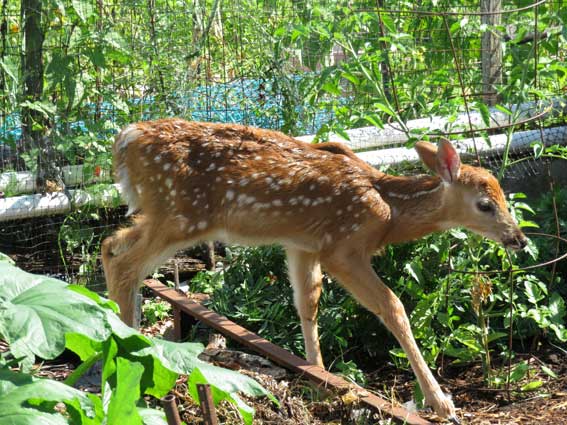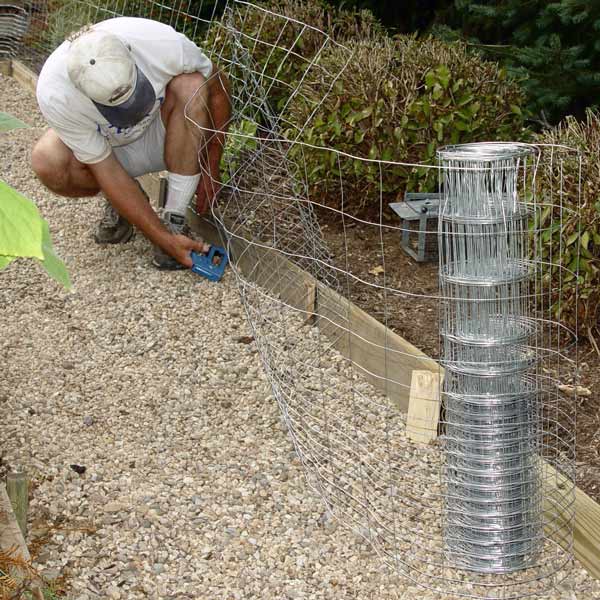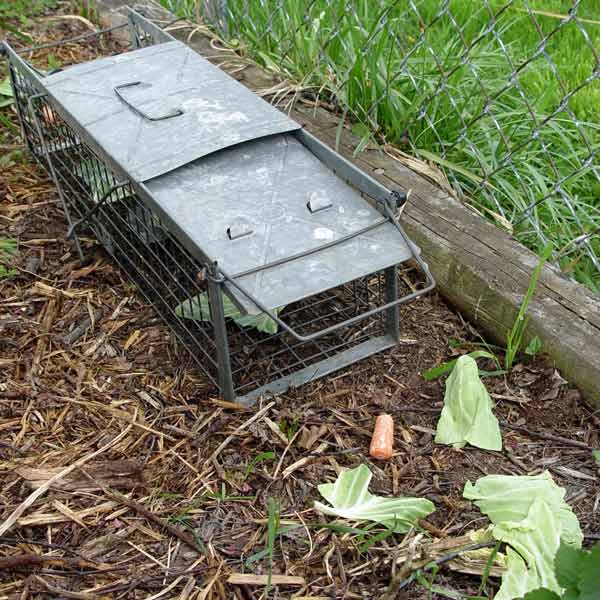What’s Making Tunnels in the Lawn?
When tunnels appear in your lawn and garden, voles are likely the culprit. Read about ways to stop voles, and how your lawn can bounce back.

A single deer can eat much of a garden in a single night. © Getty Images
Dry soil can be watered, bugs can be picked or sprayed, and weeds can be prevented or pulled. But keeping your home-grown vegetables from being eaten by animal pests is an ongoing challenge that’s never completely solved. Deer and rodents love tender, young veggies even more than you do, and they’re very clever and persistent in finding ways to get it before you do.
Some ways to protect your harvest…
This is your best bet for deer, which are voracious feeders capable of destroying a garden in one night. Deer jump high, so go up seven to eight feet with mesh, netting, or lattice to stop them. A six-foot-tall fence that deer can’t see through also usually works. Alternatives are slanting a six-foot mesh fence at a 45-degree angle outward or using two four- to five-foot-tall fences placed parallel about four feet apart. Deer are excellent at jumping up but not so good at jumping out.
For rodents, go with chicken wire, hardware cloth, or vinyl-coated metal fences at least three feet tall. The smaller the openings, the better. Assume rodents, rabbits, and groundhogs will attempt to go under the fence, so bury boards six to 12 inches deep and staple your fence to the top. Or make an underground “apron” by burying fencing six inches deep and six inches out. To keep groundhogs from climbing over, leave the fences unsecured at the top and purposely "floppy."

Secure fencing to buried boards to head off animal burrowing. © George Weigel
Squirrels and birds can go in from above, so to stop these, you may need to stretch netting over a garden. Birds especially love blueberries and other bush fruits. Plan on tightly netting these plantings or you might not harvest a single fruit. Wrap or peg down the net bottoms so animals don’t sneak in underneath.
Garden centers carry numerous brands of these liquid or granular products, usually made out of ingredients that are pungent, smelly, or bitter-tasting. Most of them work. The trick is that you have to apply repellents often enough to keep the scent fresh, such as after rains or every few weeks. Use them around the garden and plants, not over edible parts, unless the product label says that’s OK, and you wash them well before eating. It’s also helpful to rotate different repellents so animals don’t get used to a smell and realize it’s a ruse.

Scare tricks like this fake owl sometimes chase away some animals. © George Weigel
Some people set out noise-making devices or other scary objects to chase animals away. These include plastic owls and snakes, scarecrows, ground-vibrating spikes, motion-activated lawn sprinklers, shiny Mylar tape, sweaty sweatshirts, and hanging pie pans or old CDs. Sometimes these work, sometimes not. Again, animals may be startled at first but eventually realize the threat isn’t real.
Cage traps can be bought that are baited with a pest-favorite food. The food draws them in, where they step on a plate that closes the door behind them. The down side is that you then have to figure out what to do with the trapped animal (local rules vary on releasing). Chipmunks and groundhogs trap fairly easily, but voles and rabbits are more wary. Mouse or rat snap-traps are effective for small rodents, if you’re not averse to killing them.

Groundhog trap © George Weigel
Fight nature with nature by recruiting an animal of your own that likes to hunt or chase wild animals. Groundhogs hate dogs… and the feeling is mutual. A vigilant, barking dog may even keep deer away. Cats are the mortal enemies of small rodents, especially voles, mice and chipmunks. They’re very adept at hunting them, too, and they may even bring back dead carcasses to show you their skill.